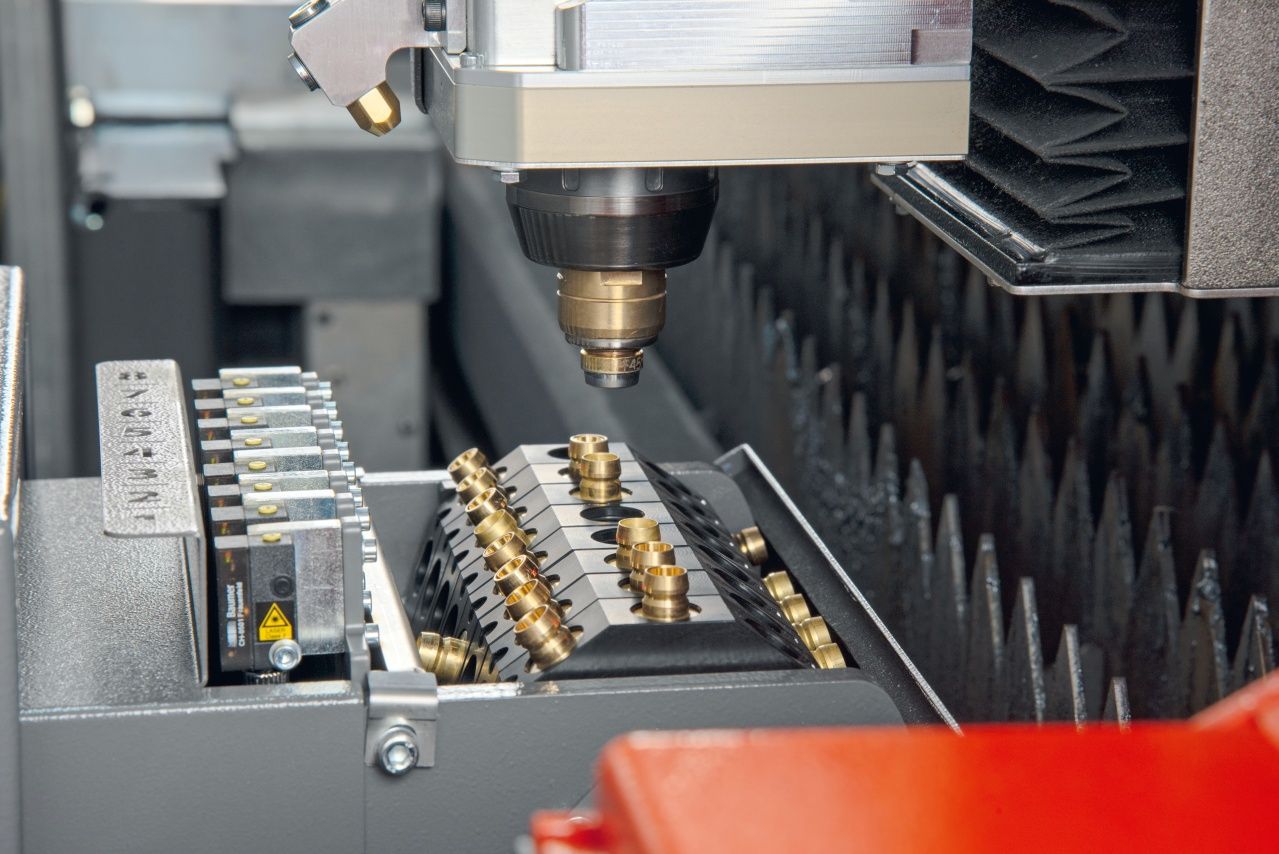
Blog Fiber Laser’s Impact to Automated Technologies
In particular, the demand for fully automated laser cutting systems that can operate on off-shifts and over weekends has led to the evolution of automated machine setup and monitoring tasks.
Eliminating Manual Setups
In the past, laser operators were required to make a number of manual adjustments to the laser cutting machine before each material was cut. This involved adapting the appropriate cutting parameters, setting the proper focal lengths and focal positions, selecting the correct nozzle types, and centering the nozzle. While the machine was running, the operator would be required to monitor cut conditions as even an incidental bump to the nozzle could affect the nozzle centering, posing a significant risk during unmanned operations. When this occurred, the operator would need to stop production, inspect the nozzle for damage, replace the nozzle if necessary, and then re-center the nozzle.
New machine automation technologies have addressed these concerns, enabling fully automated fiber laser cutting operations with little to no supervision.
- Fixed cutting heads now feature automatic focal positions based on the material to be cut, and variable telescopic magnification automatically adjusts the focal length and the respective spot size.
- Automatic nozzle centering and calibration are carried out automatically. Nozzle changers, also have the ability to change the nozzle size and type automatically depending on the material to be cut.
- Automation technologies for monitoring nozzle centering and nozzle calibrations as well as cut kerf monitoring greatly enhance a machine’s ability to run in off-shifts and weekend shifts without the inherent risks associated with unattended operations.
With these advancements, laser cutting systems can now operate fully automatically with automated material handling and storage systems that present materials to the laser cutting machine. The laser cutting machine accomplishes all of the automated setups for focal length and spot size, nozzle selection, nozzle centering, and calibration. The automatic unloading of the cut sheets is accomplished with the automated material handling system, and if equipped with part sorting, automatic unloading and stacking of the parts and sorting by kits or jobs is possible. All of these automated technologies combined make it possible to operate unmanned laser cutting systems in the off-shifts and over weekends with consistently high-quality results and high throughput capabilities.
Maintaining the Pace with Order Management
In order to ensure that automated laser cutting systems continue to produce parts, it is necessary to have an automated order management system. As each job releases to production, the order management system analyzes the order and identifies job requirements such as material type, thickness, and due dates, and organizes them accordingly.
Based on required operations, production workflows are assigned to each job. Next, the system calculates the required times for each operation based on known setup, cycle times, and quantities to be produced, and provides the total estimated production time from start to finish. As each job maintains an effective delivery date, this becomes the basic parameter for the planning and monitoring of the job in real time.
Real-Time Monitoring
Remote monitoring systems involve web-enabled cameras. Production monitoring systems allow managers to view the cutting process in real time and monitor the jobs that are being processed. Real-time measures are based on data communicated by production machines and centrally collected for analysis. Standard measures can be compared against actual measures to determine if the process is on track or not. Problems can be identified and corrections can be made in real time before that process is completed.
Making an Impact
The evolution of laser cutting technology has brought about significant advancements in machine automation technologies for laser cutting operations. The need for fully automated laser cutting systems that can operate with little to no supervision has led to the development of machine setups and monitoring tasks that allow for unmanned operations during off-shifts and weekends.
With the use of automated material handling and storage systems, laser cutting machines can now accomplish all the necessary setups and calibrations, enabling high-quality results and high throughput capabilities. Automated order management systems help to maintain the pace with demands from fiber laser cutting systems and assist managers with real-time data metrics necessary for ensuring on-time deliveries.